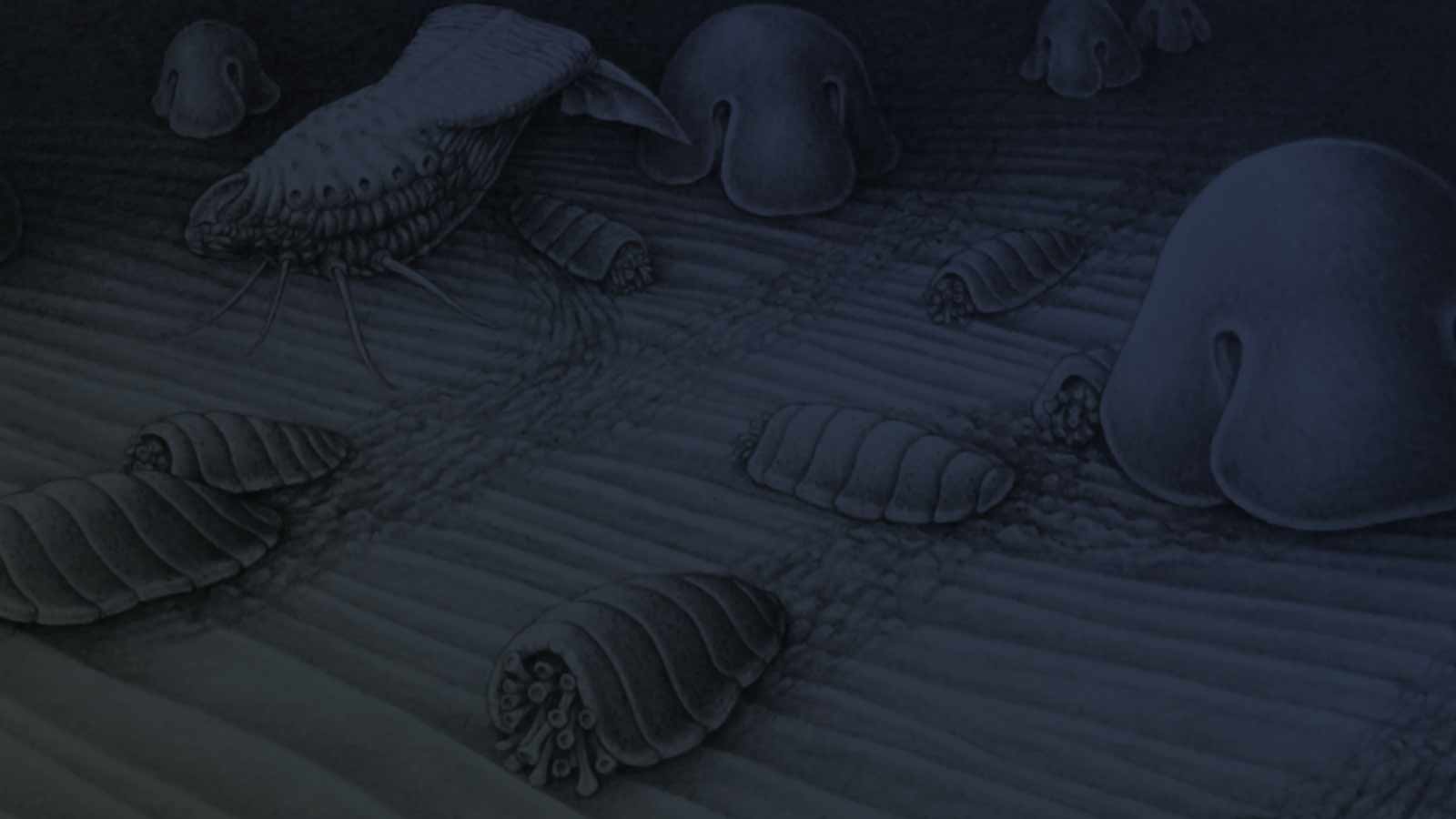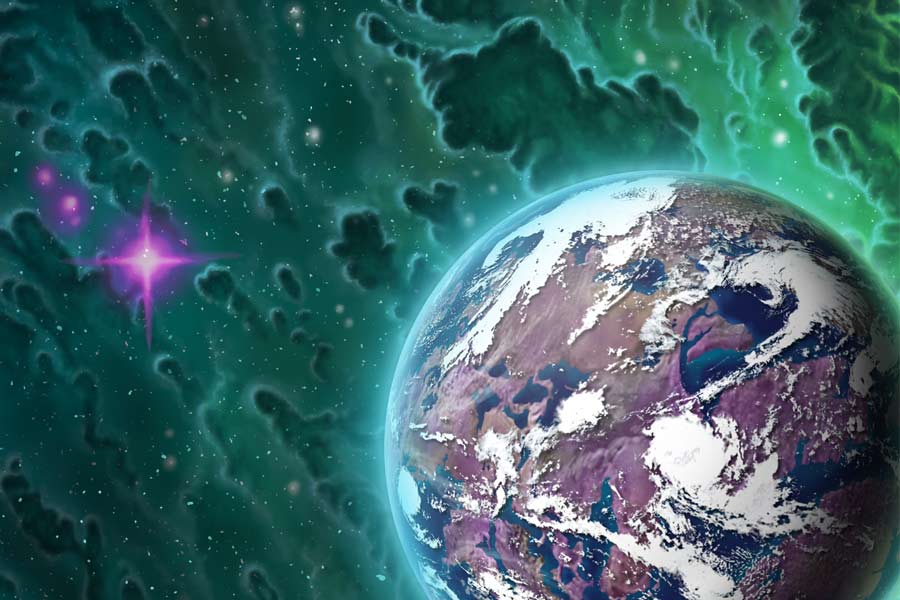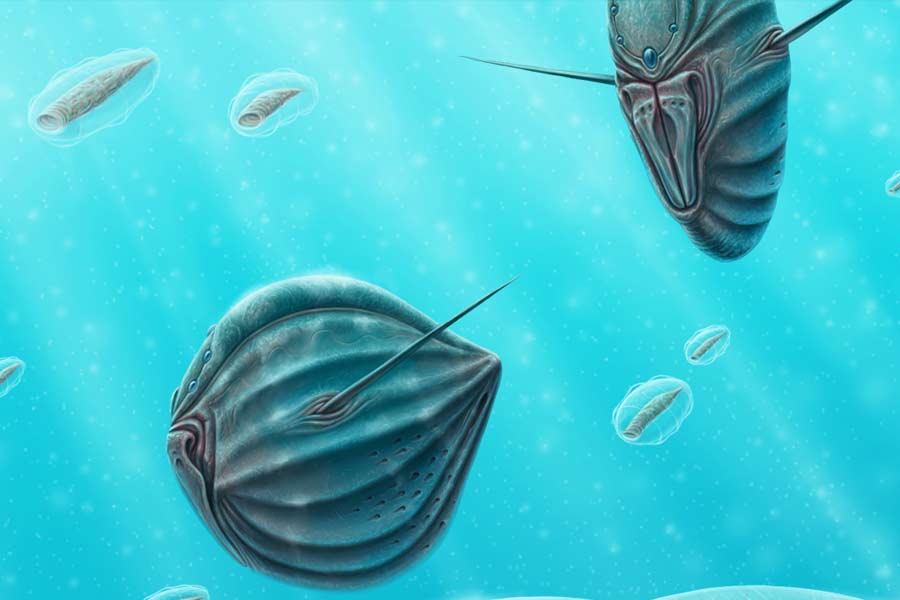Deep Sea
Ghosts in the abyss.
Beyond the reach of sunlight.
If open oceans represent the largest biome on this planet, the deep sea is the second largest. Farther down in the water column, all light from the sun has been absorbed, creating a massive volume of cold black space. However this realm is far from lifeless. Marine snow—particles of organic debris from the water above—slowly sink downwards, along with the larger carcasses of deceased organisms. This creates the basis of a rich food web, and the inhabitants here have evolved numerous ways to take advantage of it.
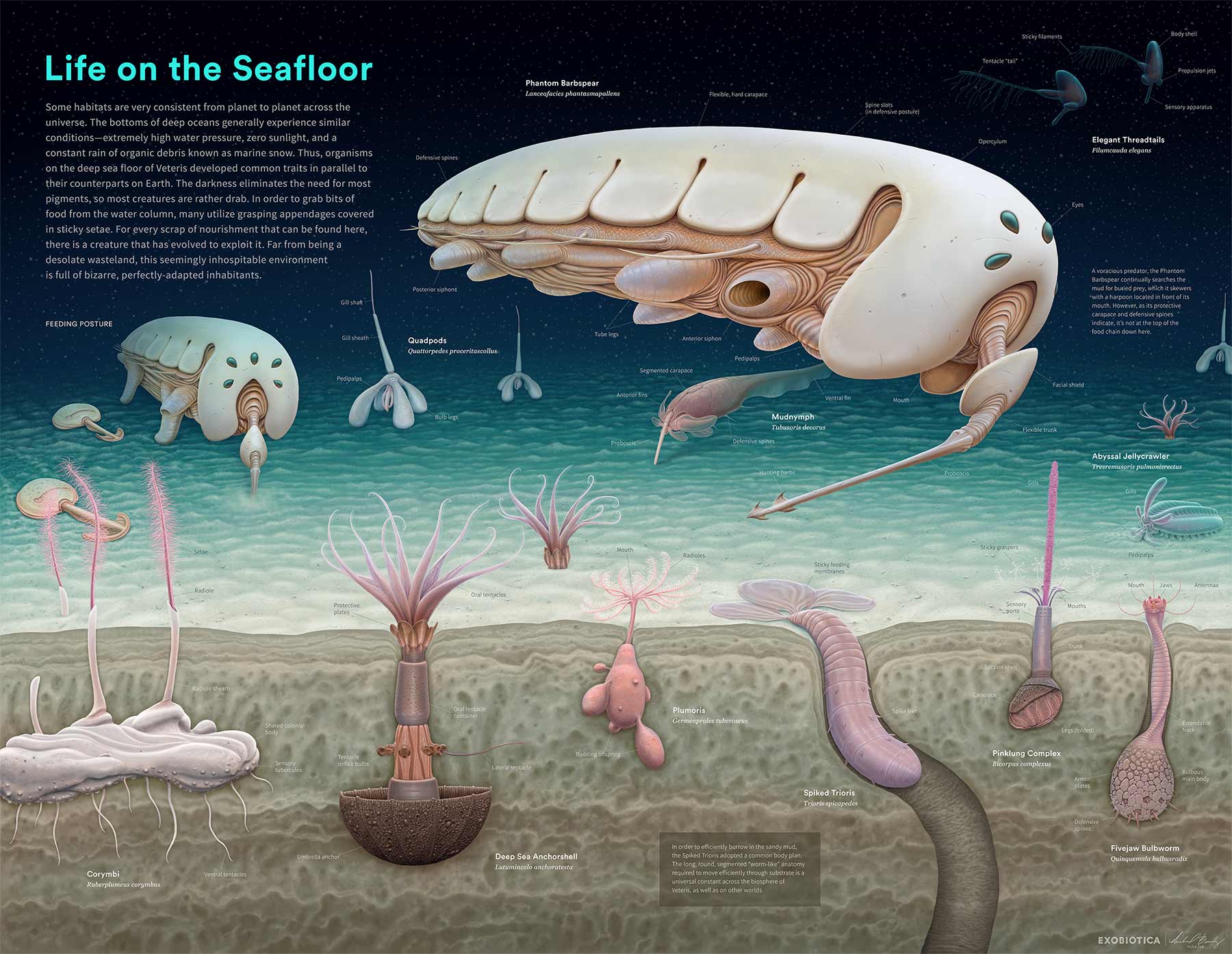
Life on the Seafloor
2024, Digital
A Community Thriving in the Mud
Some habitats are very consistent from planet to planet across the universe. The bottoms of deep oceans generally experience similar conditions—extremely high water pressure, zero sunlight, and a constant supply of marine snow. Thus, organisms on the deep sea floor of Veteris developed common traits in parallel to their counterparts on Earth. The darkness eliminates the need for pigments, so most creatures are rather drab. In order to grab bits of food from the water column, many utilize grasping appendages covered in sticky setae. For every scrap of nourishment that can be found here, there is a creature that has evolved to exploit it. Far from being a desolate wasteland, this seemingly inhospitable environment is full of bizarre, perfectly-adapted inhabitants.
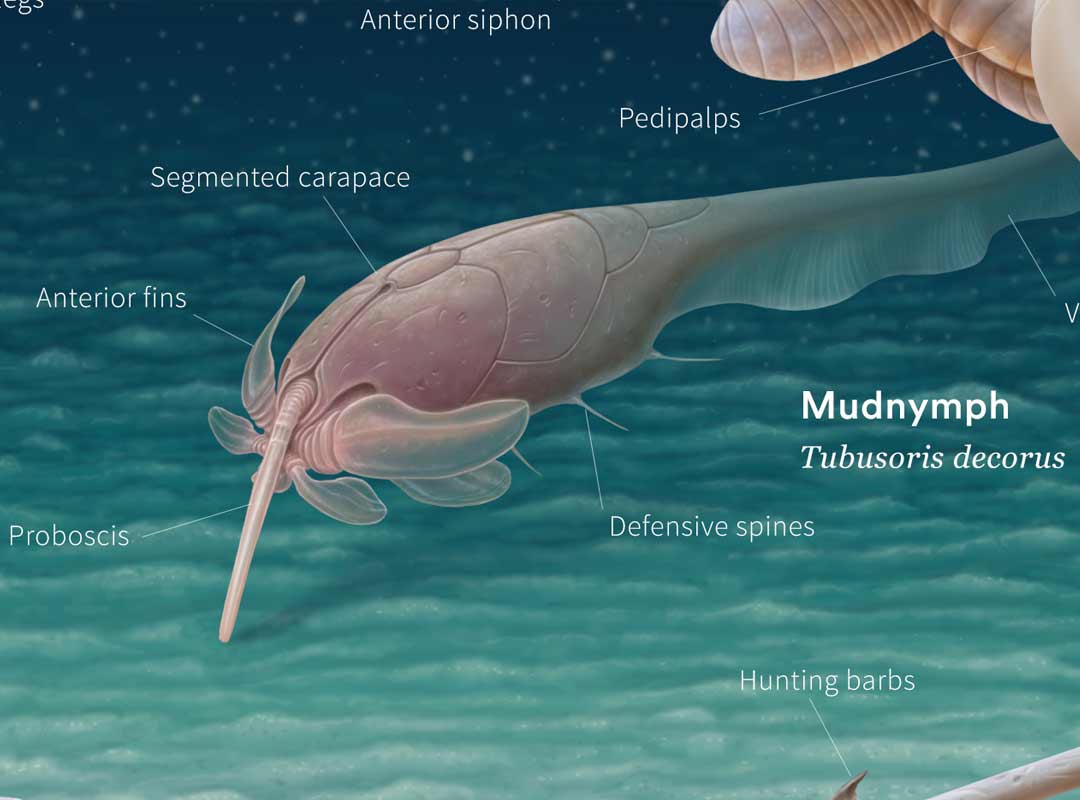
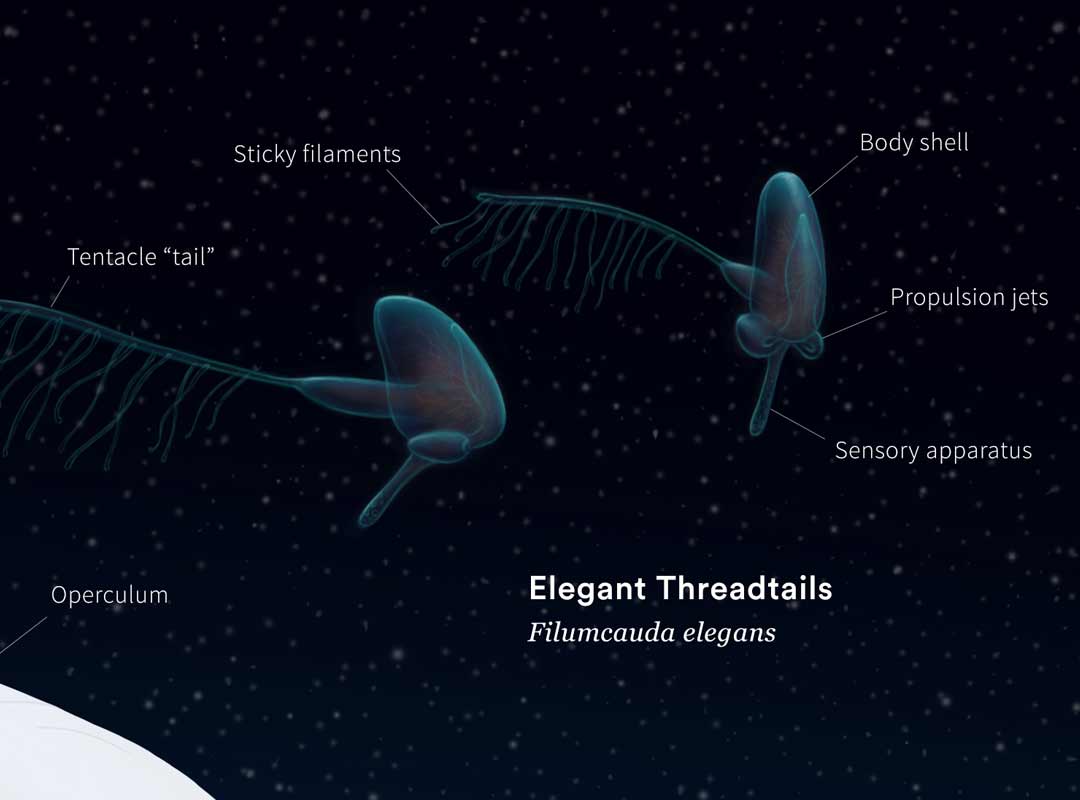
A voracious predator, the Phantom Barbspear continually searches the mud for buried prey, which it skewers with a harpoon located in front of its mouth. However, as its protective carapace and defensive spines indicate, it’s not at the top of the food chain down here.

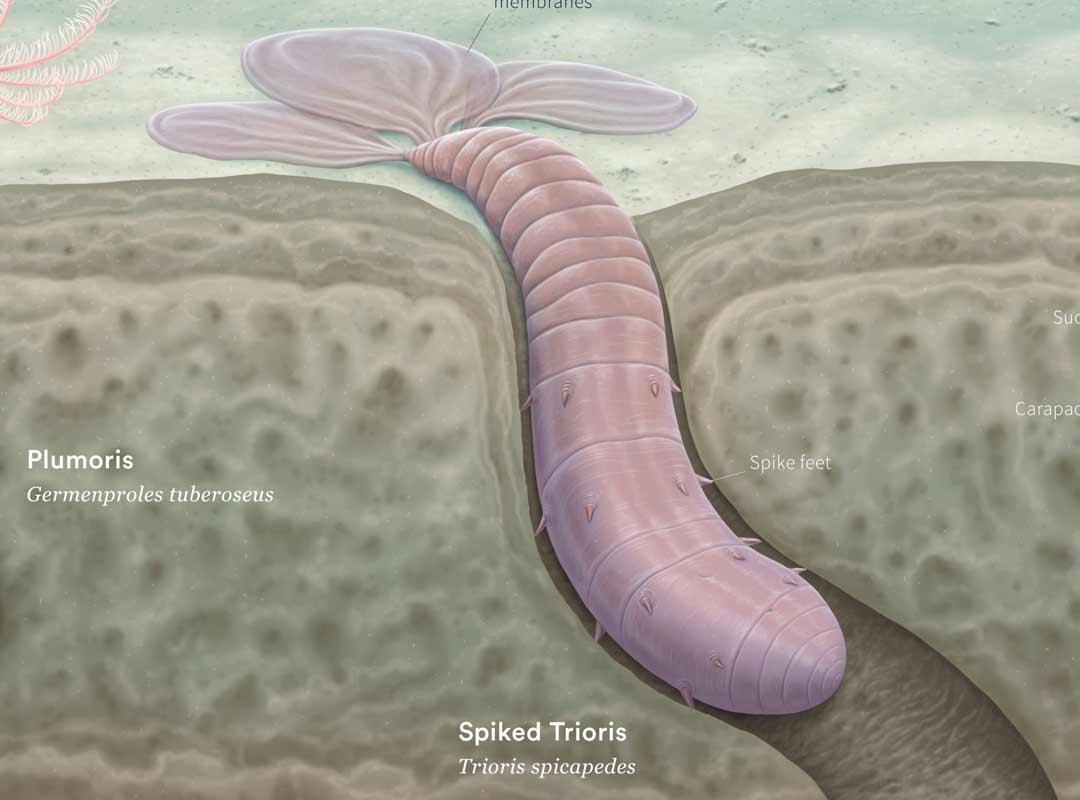
In order to efficiently burrow in the sandy mud, the Spiked Trioris adopted a common body plan. The long, round, segmented “worm-like” anatomy required to move efficiently through substrate is a universal constant across the biosphere of Veteris, as well as on other worlds.

Life in the Dark
2021, Digital
Shining brightly in the eternal night
Bioluminescence has evolved independently multiple times on Veteris. Nowhere is it needed more than here. In the lower depths of the ocean, most creatures have never seen even the faintest hint of sunlight, yet most posess eyes. The ability to create light has enabled many to find food, attract mates, and even evade predators. The Giant Alicio has evolved a pair of lights in the shape of those emitted by its main prey, the Gullible Vagari. By mimicking the Vagari's mating display, it lures the misguided creature to within range of its anterior harpoons, making an easy kill.
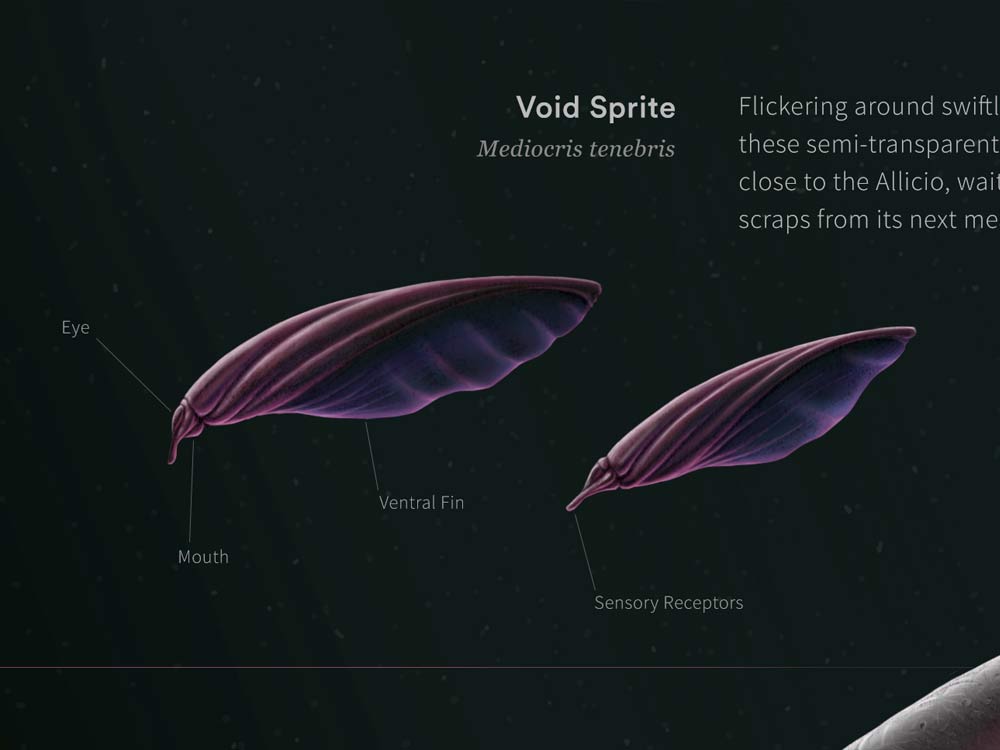
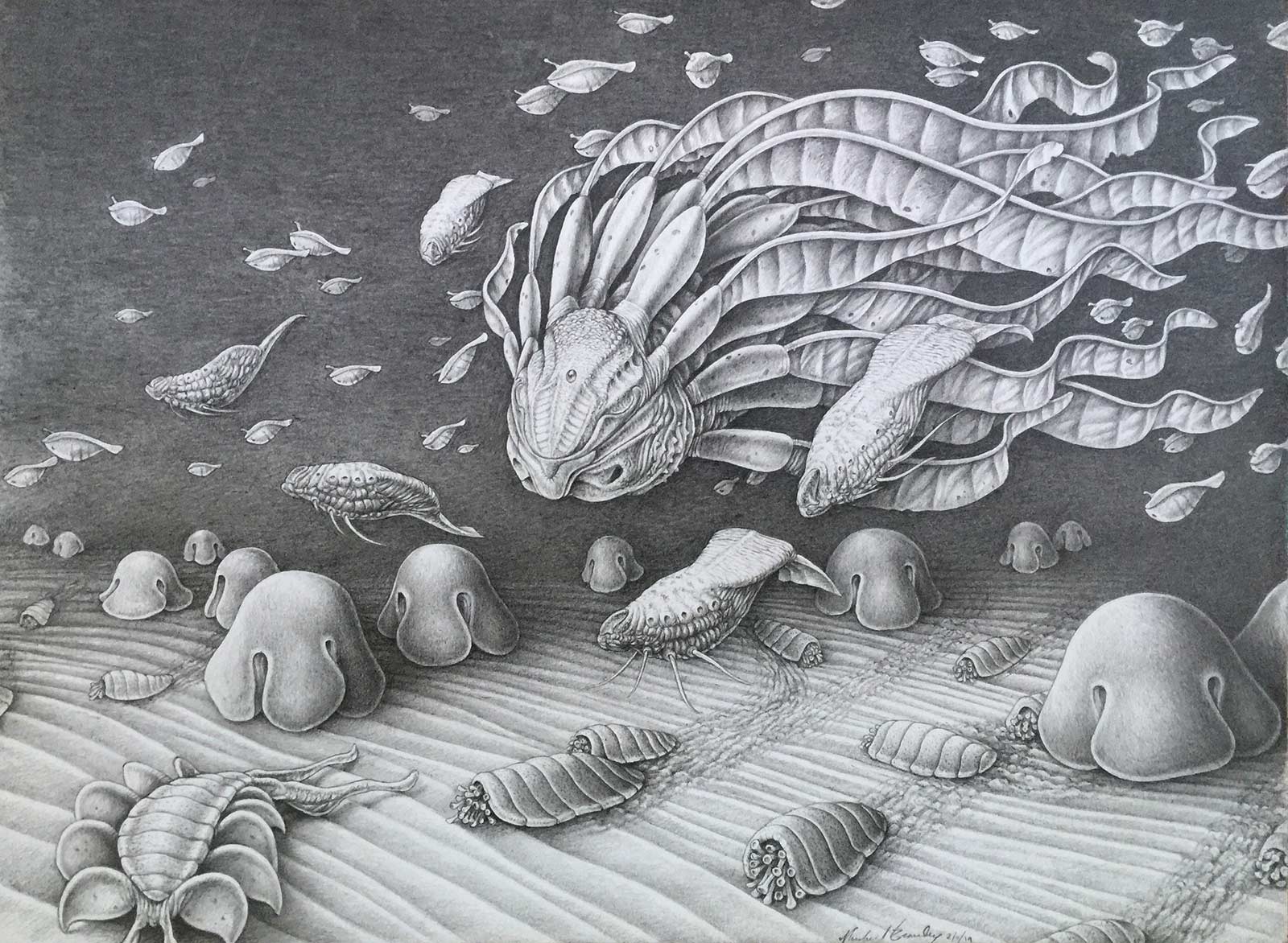
Down Below
2019, Pencil
Life at the bottom of the world
Down on the deep ocean floor, what should be a barren wasteland is in fact bustling with life. The waters above are so rich that the steady downward flow of organics grows a marvelous community of lifeforms. Some slowly move along the bottom sifting through the muck, while others swim above in search of hunting opportunities. Scavengers follow the larger hunters waiting for a chance to steal a morsel.
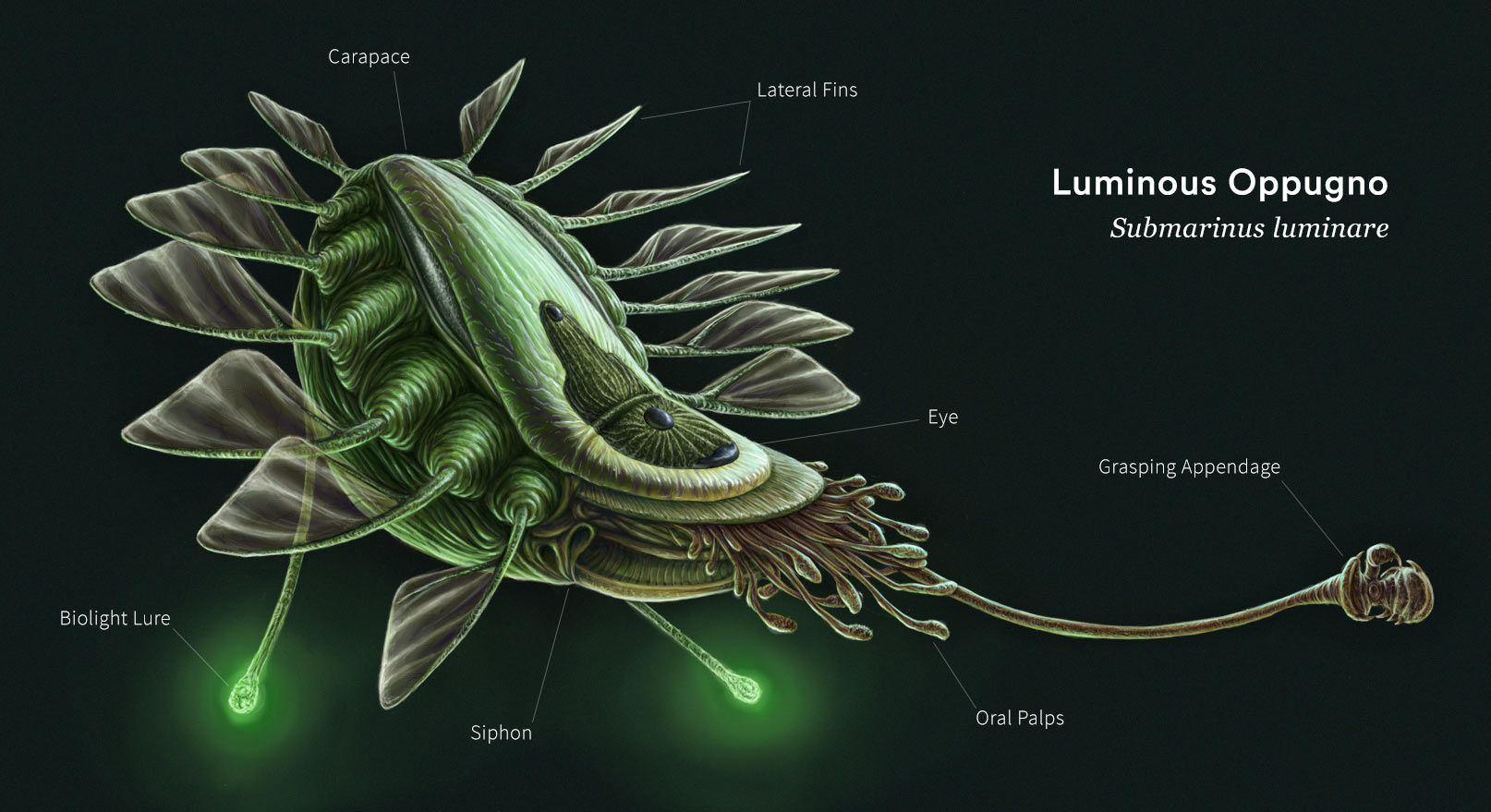
Luminous Oppugno
2011, Digital
An ancient predator
One of the most ubiquitous and successful hunters down here is the Luminous Oppugno. A rather primitive creature, its body plan has remained virtually unchanged for hundreds of millions of years. Environmental change is a main driver of evolution, and the deep sea is not subject to deviations in climate due to major catastrophic events such as volcanic eruptions and asteroid strikes in the same way surface biomes are. Without drastic changes in their surroundings, lifeforms which are best suited to their specific niche tend to experience evolutionary stasis.
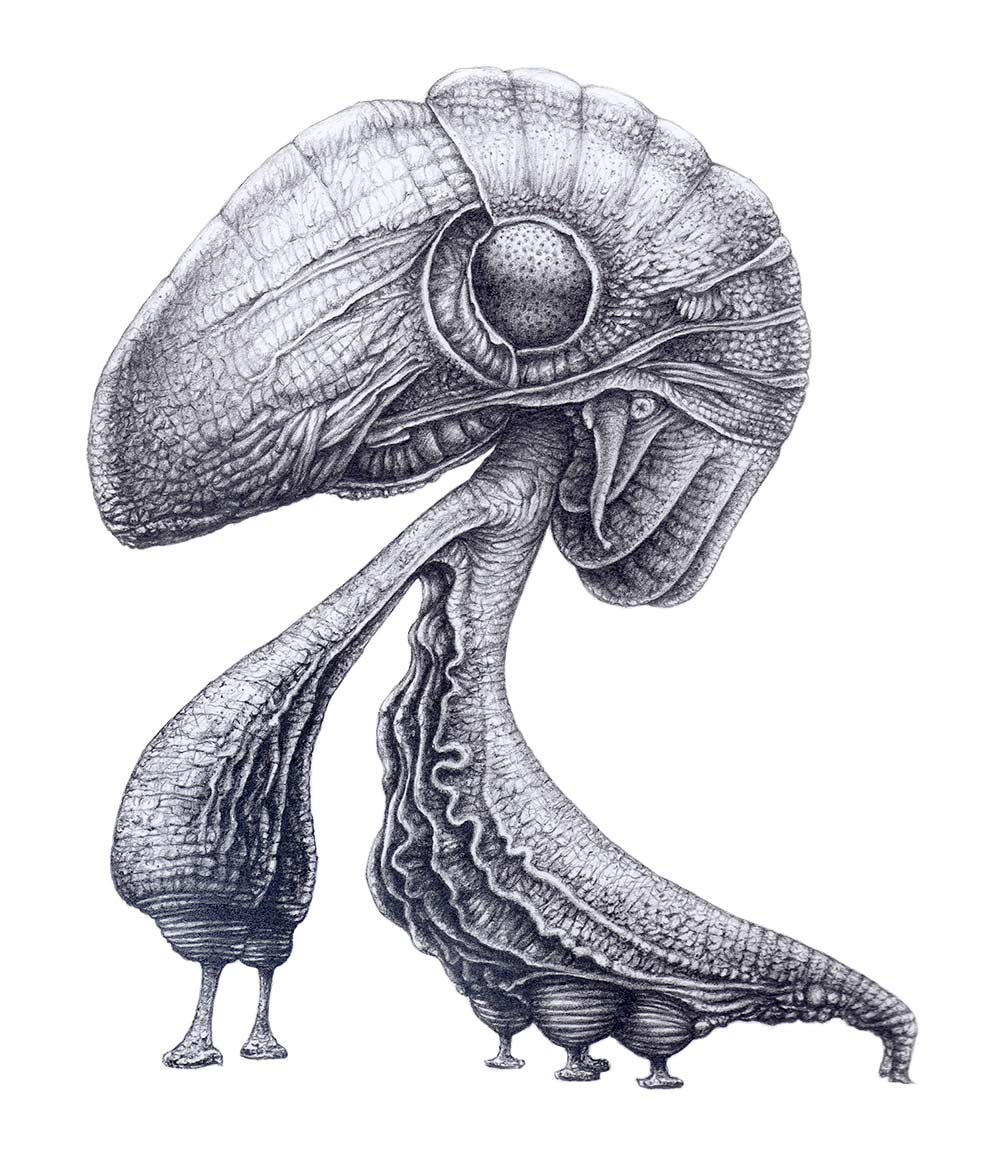
Furviscus aecorambulans
2008, Pencil
The zombie of the deep
Creeping slowly and silently along the seafloor is an unusual three-legged phantom. With a method of locomotion seemingly out of place here, the Furviscus evolved tripedalism parallel to its counterparts on land. It is completely blind, instead relying on a set of chemosensors, and most importantly, its powerful ears. An exceptionally dense medium, water is excellent at conducting vibrations, and even the slightest impact of potential food onto the soft seabed can be detected by the furviscus from a long distance away. In clumberous slow motion, this scavenger's awkward gait and pale wrinkled visage undoubtedly make it one of the most haunting sights in the deep dark void.
